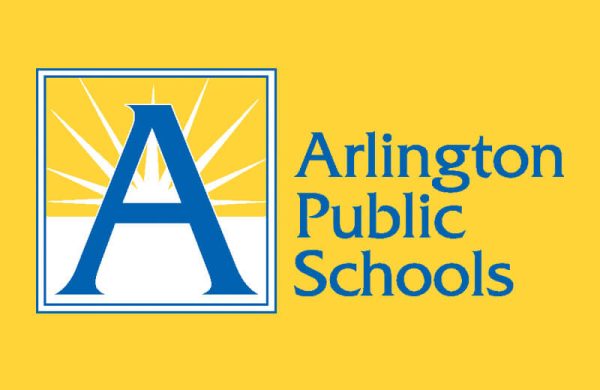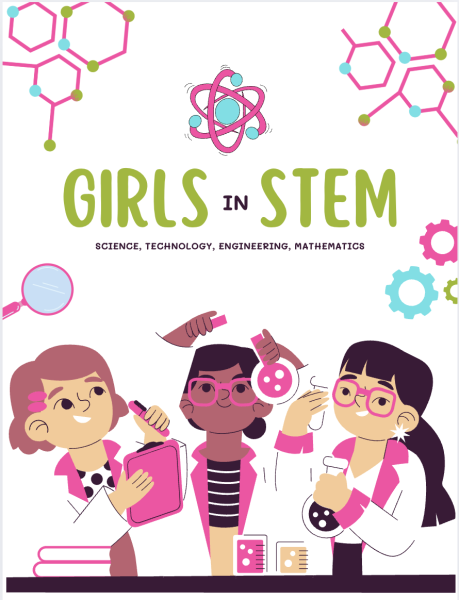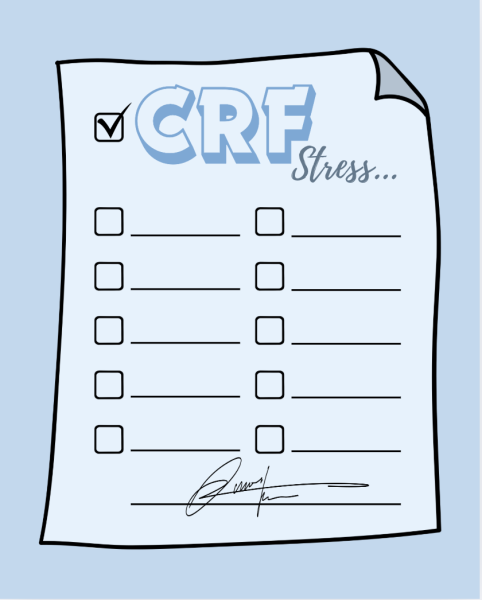APS staff receive COVID-19 vaccination
Arlington Public School (APS) teachers and staff wait to be vaccinated. On Saturday, January 16 and Monday, January 18, an initial group of APS staff were vaccinated as part of the 1B stage of federal vaccine rollout.
On January 16 and 18, some Arlington Public Schools (APS) staff members were vaccinated against COVID-19. Though they have received the first dose and staff members have been able schedule an appointment for their second dose, and some APS staff were not able to schedule their first vaccine appointment. Despite these barriers, those who were vaccinated said the experience was a good one.
“I was just excited [and] happy about it,” Mr. Robbie Munsey, STEM coordinator and instructional coach at Arlington Career Center (ACC), said. “I’ve been locked in quarantine forever, and to me, this was finally seeing some light at the end of the tunnel. This is just a chance to get back to the life we all know.”
Governor Ralph Northam designated the educator’s place in the federal vaccine rollout effort to be in stage 1B, or one of the first groups to receive it.
“For the last couple of weeks, since we returned for the new year, I’ve been pushing [for them to] let us get the vaccine,” president of the Arlington Education Association (AEA) Ms. Ingrid Gant said. “Let [educators] get the first dose, let them get the second dose before we think about coming back [to in-person school]. We were ecstatic that the governor pushed for us educators to get them first.”
The vaccinations come as APS begins to send Level Two and Three educators — Level 2 including elementary staff and Level 3 being secondary school staff — back into the building, at least for small amounts of time, and preps to allow students back in for hybrid learning. Some teachers have safety concerns about returning for hybrid learning.
“I wasn’t ever worried about getting COVID for myself; my fear was in helping to spread it to other people,” Mr. Munsey said. “Even if I infected a student, who more than likely will be totally fine, they could have a grandmother or a parent, relative or friend with health conditions, and that was a hard pill to swallow.”
For some teachers, receiving one dose of the vaccine has softened these concerns.
“Having the vaccine makes me less nervous, of course, because I’m coming into a building with some protection, with immunity,” biology teacher Ms. Lourdes Sotomayor said. “It’s going to make it much harder for me to spread the virus to my family members, and with the help of mitigation techniques in the classroom, I think that that’s a safe environment, and it’s something I can work with.”
For those who were able to get vaccinations, the process worked as follows: educators waited outside the Syphax Center in a line, spaced six feet apart, while volunteers asked for their name and time slot. Next, those being vaccinated were asked to check-in and present their ID, and were then ushered to a room with nurses ready with the vaccine. After being vaccinated, educators were monitored for allergic reactions.
“APS did an amazing job with vaccine rollout,” Ms. Sotomayor said. “All the volunteers there were really nice and friendly, and they were able to answer all of the questions. It was very well organized — kudos to the APS staff and volunteers who were there that day.”
While Mr. Munsey and Ms. Sotomayor commended the process, Ms. Gant said other employees felt it could have been improved.
“It was a very small area in this Syphax building,” Ms. Gant said. “They had a few rooms, they had four people in one room, and some people didn’t feel safe in that room. They just felt like [we could have] had it at W-L’s gym, or we could have had a drive-through where [educators] pull-over and wait. So, some of the conditions at the testing center weren’t well received by educators.”
In terms of the vaccine itself, Mr. Munsey said he had some hesitations about being vaccinated, but they were quickly resolved.
“There’s a lot of fear-mongering on social media, and I see those posts and I see the people questioning it, and — it’s funny when you know that something is not true, but you see it enough that it still makes you ask yourself again,” Mr. Munsey said.
Munsey cited a couple of rumors that get attention online, including unfounded claims that the vaccine can change your DNA or includes a microchip. Ms. Sotomayor did her own research and concluded that the worst possible side effect would be anaphylactic shock from an allergic reaction, which the nursing staff had prepared for.
“To me, as I’ve been teaching science and supporting science my entire career, I knew that what I needed to do was read the facts and understand how the vaccine works,” Mr. Munsey said. “After re-reading all of [the research], I felt beyond confident about the vaccine.”
Despite success for some educators, however, for a large number of APS employees, a vaccine appointment was difficult to come by. Though the county said in a press release that it inoculated a total of 1,800 staff members the first weekend of vaccine distributions, or 900 on each day, the county is struggling with a lack of vaccine availability. This shortage, plus the difficulties some staff members had with scheduling their vaccine appointments, leaves some staff members in limbo.
“It was like a guess; you might find out on Facebook that 100 more slots have been open, and then some [educators] didn’t get those,” Ms. Gant said. “So it has been really inconsistent for those who needed vaccines. AEA pushed to make sure that those educators in Level One right now would get them first. The superintendent said there was no way they could do that. If they tried to do it, manually, it would delay [the process].”
This is an issue for these Phase 1 employees already in the building, as some said their experience in the classroom has already been frightening.
“Some educators who have been back in Level One didn’t have a mask, or they maybe had one or two, and it was a cloth mask, it wasn’t an N95 mask,” Ms. Gant said. “Some educators work with students with disabilities who may be sneezing or coughing. There was no follow through on what to do if that happens. Some of the mitigations, personal protective equipment (PPE), that was said should be in place weren’t consistent.”
For employees who were not vaccinated and may still be uncomfortable with returning to the building, options are limited. Though some staff qualify as high risk and therefore can avoid in-person teaching, other at-risk groups, such as older staff members or those with at-risk family members, were not included as acceptable “high risk” groups, despite CDC guidelines. Teachers are allowed to use sick leave to avoid returning to the building, but that is harder for some employees.
“We have [employees,] we have those outside of [teacher or administrative pay grades] that make the least amount of money, [such as] our bus drivers, and they don’t have leave,” Ms. Gant said. “Some of them do, but some of them are very concerned about using leave because they don’t have it. So, that’s leave without pay.”
To address these issues, the AEA is advocating for giving educators hazard pay, or additional pay for those who work in dangerous conditions.
“For our educators that are in the building now and Level One, they should be getting hazard pay, because you can’t guarantee that they’re going to be safe,” Ms. Gant said.
Until conditions are more safe, the AEA is advocating for the county to stop the return to the building, consider these concerns and vaccinate all staff who wish to be vaccinated before they return to school.
“[After vaccinations], then we’re back,” Ms. Gant said. “I think once both shots are given, educators will be ready to come back with no problem. That’s the goal, we want to be back.”
Despite numerous issues that the county now faces — including uncertainty about the availability of a second dose for teachers — teachers who received the vaccine said it helped them feel more comfortable.
“For the teachers, I think the most important thing is getting the students back in the classroom so we can do the best job possible,” Mr. Munsey said. “I think virtual learning is a great thing, but it’s never going to replace in-person learning. So, wear a mask and get your vaccine. That’s it.”













